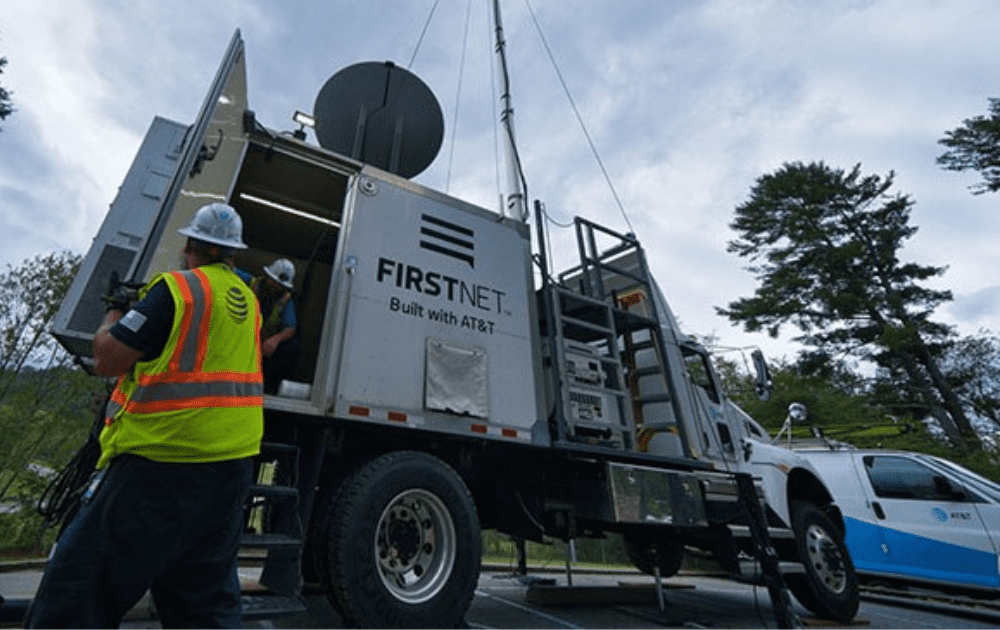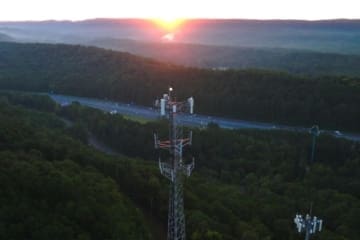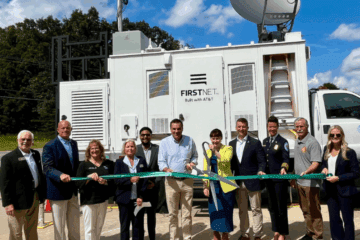Our thoughts continue to be with our neighbors and the communities impacted by Hurricane Helene. The storm resulted in historic impacts to communities, homes, families and critical infrastructure in North Carolina. But it’s times like these that make me incredibly proud to work for this company and proud of the work we do to connect communities. From preparing for the storm, to the immediate aftermath, to our FirstNet team connecting first responders, to our continued restoration—our teams have responded with swift action and innovative solutions with customers always at the heart of our efforts.
While most of our network is operating normally at this time, we continue to make progress restoring wireline services in some of the most severely impacted areas, and our AT&T teams continue to work collaboratively with our public and private sector partners to replace damaged infrastructure. As communities affected by the storm continue the process of recovery, we are fully committed to supporting the response and restoration efforts.
Our Response
When Hurricane Helene hit North Carolina, our AT&T teams were ready to respond. AT&T’s Network Disaster Recovery (NDR) team was on the ground immediately following the hurricane with a self-sustaining basecamp, and we deployed crews of support team members near the hardest-hit areas affected by the storms. Their efforts were crucial in rapidly restoring network connectivity in the hardest-hit areas.
Connecting First Responders with FirstNet
FirstNet®, Built with AT&T was a cornerstone of our response. FirstNet, the nationwide public safety broadband network, played a pivotal role during and after the hurricane and provided essential communication support for first responders and the public safety community.
FirstNet partnered with customer agencies of all sizes, including the North Carolina Department of Public Safety. With our FirstNet Response Operations Group™ (ROG) team working around the clock to respond to more than 220 requests from public safety agencies across the southeast, it became the largest response in the history of ROG. There were 89 requests in a single day, demonstrating the immense need for support and the critical role our services play in disaster recovery.
And beyond ROG deployments, the North Carolina 911 Board, part of the N.C. Department of Information Technology (NCDIT), was able to make sure callers were connected to 9-1-1 through their existing Next Generation 9-1-1 infrastructure provided by AT&T ESInet. The rerouting capability ensured 9-1-1 calls to PSAPs in western North Carolina affected by Helene were answered by PSAPs in non-impacted areas, providing resiliency during a time of uncertainty for residents in the wake of the storm. Thanks to the resiliency and redundancy of this network, NCDIT had no reports of 9-1-1 calls not being delivered.
Supporting Our Communities
AT&T’s work to support our customers and communities goes beyond our network infrastructure. To assist communities impacted by Hurricane Helene, AT&T contributed to the North Carolina Disaster Relief Fund and the North Carolina Community College Foundation. And recently, we worked with the Kramden Institute to refurbish and distribute laptops and cell phones to those impacted by Helene.
In the immediate aftermath of the storm, AT&T deployed a Mobile Connectivity Center (MCC) through its ongoing collaboration with non-profit Information Technology Disaster Resource Center (ITDRC) in Asheville to further support those affected. The MCC served as a connectivity resource for those who lost power and needed internet access. It provided facilities to charge devices and offered the use of 16 computers.
We are immensely grateful to our employees, customers, neighbors, partners and the entire North Carolina community for their resilience, patience and cooperation during this challenging time. AT&T has been connecting North Carolina communities for 145 years, and we are committed to helping our communities as we rebuild together.
Q&A with Robert Chandler, Director of Access Construction & Engineering

Tell us about your role as AT&T’s Director of Access Construction & Engineering.
I have the privilege of leading an exceptional Construction & Engineering team dedicated to serving our customers and stakeholders. Their efforts encompass the design, construction, and maintenance of our network infrastructure in North Carolina. My leadership philosophy revolves around leading from the front while empowering each team member to perform their roles with dedication and enthusiasm.
The destruction in western North Carolina was unprecedented. What specific challenges did your team face in the aftermath of Hurricane Helene in terms of restoration, and how did you overcome them?
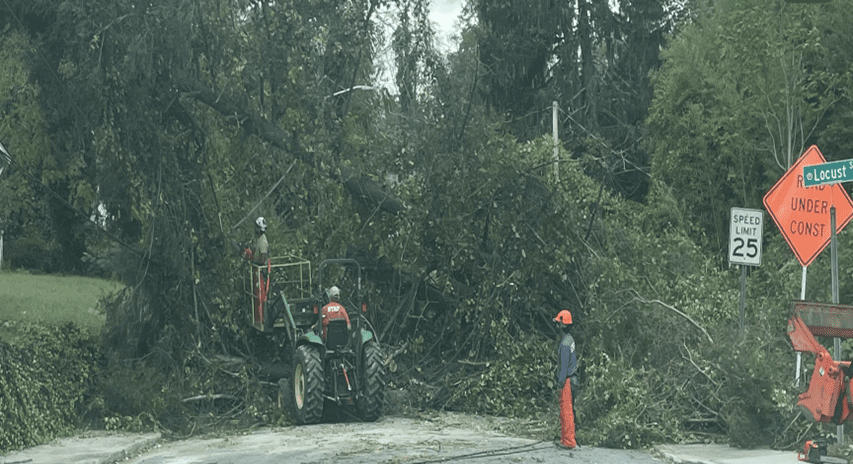
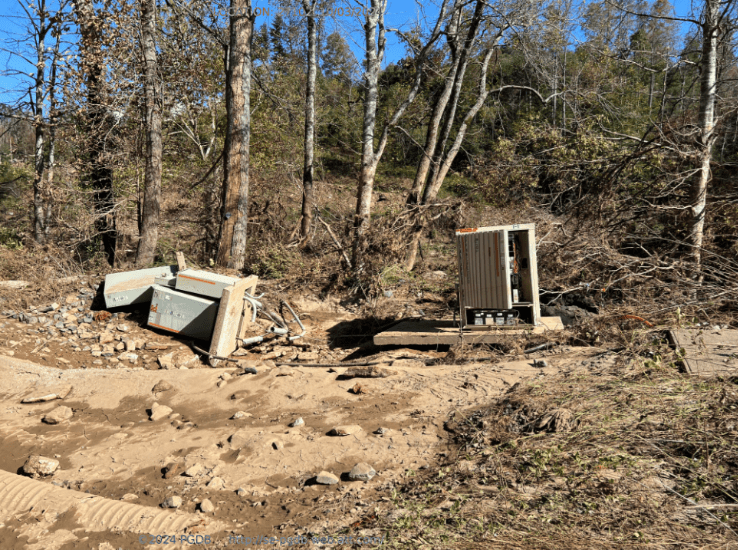
The destruction in western North Carolina caused by Hurricane Helene was unique due to widespread infrastructure damage of all kinds. Having been involved in several storm restorations, this one stood out due to the sheer difficulty of accessibility. The day after the storm, we encountered signs along the interstate reading “All Roads Closed in Western NC,” which underscored the severity of the situation. We dealt with destroyed roads and bridges, difficult mountain terrain, landslides, massive debris piles and areas that were inaccessible until floodwaters receded. Once we gained access, the team confronted thousands of broken poles, more than 2 million feet of downed or severed cables, and flooded electronics, all without permanent power. Simply put, everything we needed right away was broken.
Tell us about the response efforts and the collaborations that helped with the restoration process.
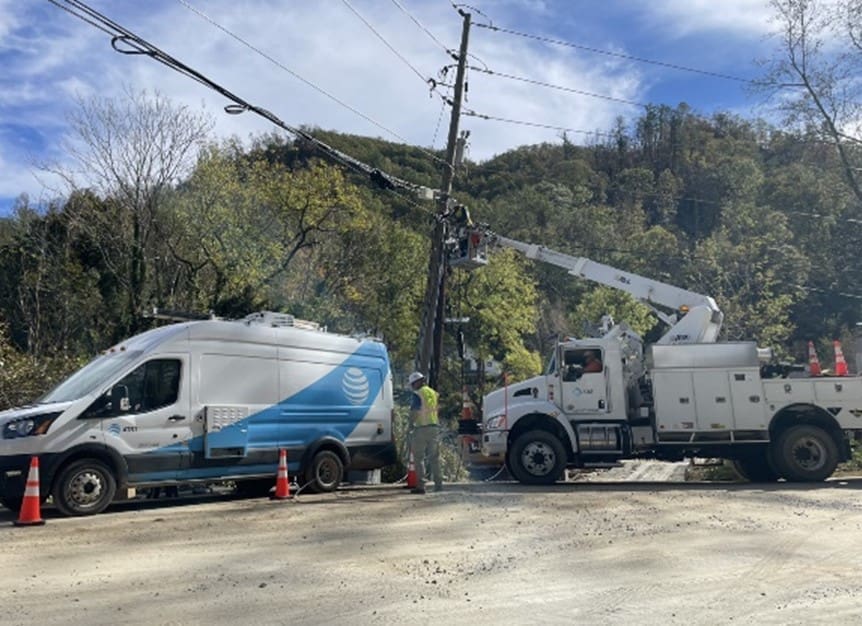
The response to the hurricane showcased the remarkable ‘Power of Yes’ and the importance of collaboration among internal teams and our public and private sector partners at the local, state and federal levels. Successful restoration required the coordinated efforts of hundreds of AT&T technicians (many from out of state), frontline and remote support personnel, and proactive leaders. Everyone worked tirelessly to restore services while ensuring safety in hazardous conditions. The collaborative spirit united all of us in our mission to support those impacted by the storm and restore services to customers. While services are operating like normal in most areas, there are some areas where restoration work is ongoing. We view this as an opportunity to think about the future of our infrastructure. Much of the damaged infrastructure is comprised of legacy assets, and we are considering how to rebuild with modern broadband technology where feasible. This forward-thinking approach is essential not only during restorations, but also in our everyday work.
What are you most proud of with how AT&T responded to the hurricane?
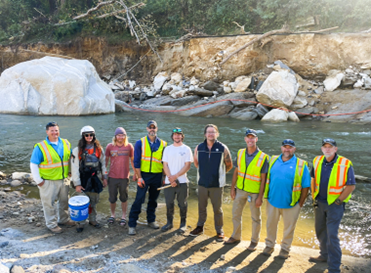
I am incredibly proud of our team’s courage and commitment in the face of destruction. The interactions between our employees and our customers exemplified the qualities that make AT&T the best Fiber and 5G company in the world. Our restoration of the interoffice fiber network, which supports wireless and internet services, was swift and the performance by our team members will have a lasting impact on the community. The innovative restoration solutions our teams put in action displayed the power of collaboration between our internal and external partners.
One example is the complete devastation along the entire fiber route that encompassed areas like Lake Lure, Black Mountain, Swannanoa, and Spruce Pine. Our teams collaborated with public-sector partners at North Carolina Emergency Management, NC Department of Transportation, NC Department of Environmental Quality and the Army Corps of Engineers, and with the assistance of professional whitewater kayakers, our teams were able to run our fiber cables through the riverbank to reconnect key Central Offices. This was a game changer in reconnecting customers in the area. It’s impossible to put into words how proud I am to work with this team and for a company that’s so dedicated to serving our customers and our communities.

